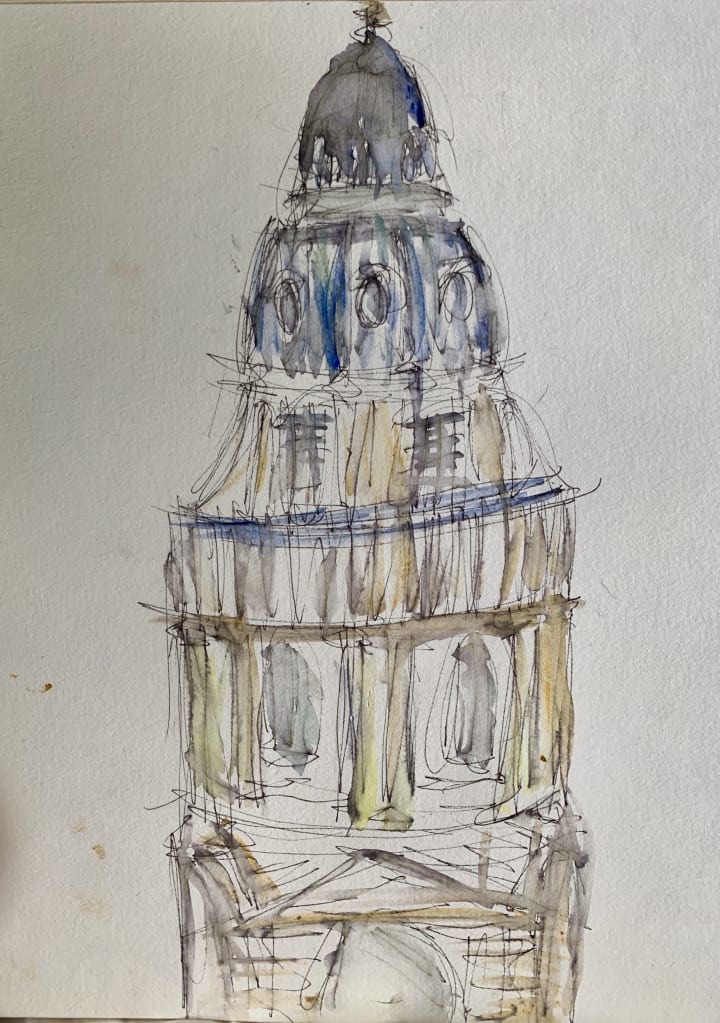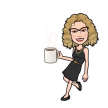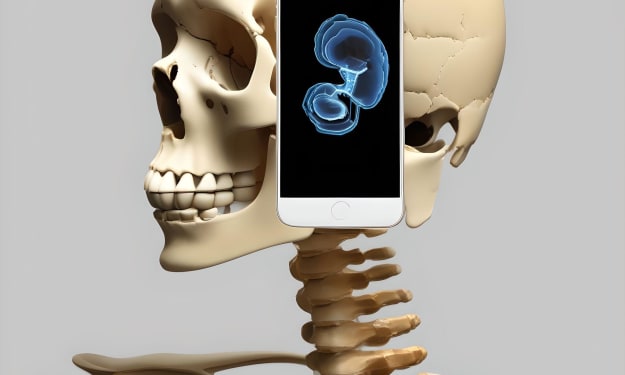How Art Can Help You Embrace The Present
A piece of art is a series of mindful moments weaved into one tapestry.

I remember the first time I learned about meditation and grounding. I sat on a slippery river rock, toes dipped into icy water, legs dutifully wrapped pretzel-like in lotus position. Breathing in, I visualized my veins extending like roots into the soil, from the base of my spine, connecting me to the Earth.
As a child, I didn’t really get why we needed to do this. Weren’t we already connected to the present moment?
This was before the ‘adult’ concerns of paying bills and daily survival…before the Internet, when the paradox of ‘connection’ would find many disconnected, myself included. But a few months later, still technically a child, I was grateful for that early experience.
Sometimes life chooses for us when we ‘grow up’. Our chronological age does not matter. At the ripe old age of 7, I found myself knee-deep in my first existential crisis, and my ship was sinking.
Crafting helped to bail me out. It was my form of grounding, and it saved this sinking ship.
Grounding is an ability to return to the present moment, or alternatively, training in a field of knowledge. To me, it is an active practice, and always changing. As an adult, it is a skill which I wish we would all learn. Not necessarily seated in lotus, but whatever way works.
For me, while I still sit in lotus when my joints allow, I prefer crafting. It is an active form of meditation.
I remember, when I first started, the pressure to stick to one thing. If you really excelled at painting, you should stick with that. No innate talent? Scrap it. Move on to the next. Stick with what you’re good at. But don’t be a Jack or Jill of all trades and master of none.
But my journey has been anything but linear. I have not lived up to others’ expectations, but I’m okay with that.
To me, crafting is like a tool. You wouldn’t expect someone to build a house with just one. Sometimes you need a socket wrench, sometimes you need a soldering iron. Sometimes you need an axe.
The more tools you have in your box, the better you will be equipped to navigate your journey, much like in life.
A crochet hook was probably my first craft ‘tool’, although I certainly felt more like a tool when I used it. As a lefty, learning was difficult. I remember having to sit with my Mom in front of the mirror to understand just how to push the hook through the certain bits of yarn, where to pull them out and back again without leaving myself in a tangled mess.
As in life, another’s mirror helped me to understand how to create on my own. But me and patterns never really got along. They may as well have been sorcery. The foreign language of DC and picot aside (double crochet; a small loop or series of loops in crochet/emrboidery), the thought of pre-fab creation didn’t sit right with me. I wanted to create something authentically mine, and watch it unfold.

For whatever reason, I picked one of the smallest threads imaginable, and made my mother a crocheted mandala, sans pattern. After hundreds of mindful stitches, I gave it away. It is not without fault, but it is honest. I began in the center, and worked my way outwards, as I try to do with every moment. As in life, you can see my mistakes along the way, a skipped stitch here and there, and its wear and tear. But it is a cherished possession and calls an old table home. It is a reminder of how I have not only grown as an artist, but as a person.

I’ve since ventured into other forms of craft, simply out of necessity. Whether it was a lack of yarn, or simple yearning for something different, I discovered the wonderful art of watercolour. It was been a welcome departure from acrylics, where I found myself too structured. Where acrylics would call me to recreate with precision, watercolour would entice me with its fluidity. With its laissez-faire attitude, it was an antidote to anxiety.

I had finally found a medium which embraced spontaneity. It witnessed the lines and angles of life, and imposed its will, precision be damned. The gouache on the page may have awkwardly spilt across lines and intentional demarcations, but it was anything but gauche. Sometimes staring into the blank pages was, but for me, it was another metaphor. No different than those defining moments in life. A blank canvas was there, awaiting the journey of the brushstroke. Each stroke would further define the picture, until after a while, it would become apparent what you were really working towards. But each stroke always mattered.
This idea of making something from nothing has continued to surprise me through the years. I did not fully appreciate it until I began working with clay. It has been a teacher of patience, and kindness. It has helped me to speak to the parts of myself which may have otherwise remained silent. A body once frozen in time found life again in the curvature of clay and its ineffable wisdom. Clay was a way to articulate the separation of body and mind that was my defense. And a Goddess emerged to unite them once again.

In sculpture, you literally take a seemingly shapeless form and mould it into something meaningful. Not unlike life. We choose through our thoughts and our actions, to mould our world and to create meaning.
And that meaning is malleable like a soft clay, a blank canvas, or a freshly spun skein of yarn. Art provides a freedom. It continuously redefines opportunity. There is alchemy in art. The ability to transmute, to transform each moment into gold, one thread at a time through the delicate needle of life.
About the Creator
E.K. Daniels
Writer, watercolorist, and regular at the restaurant at the end of the universe. Twitter @inkladen






Comments
There are no comments for this story
Be the first to respond and start the conversation.